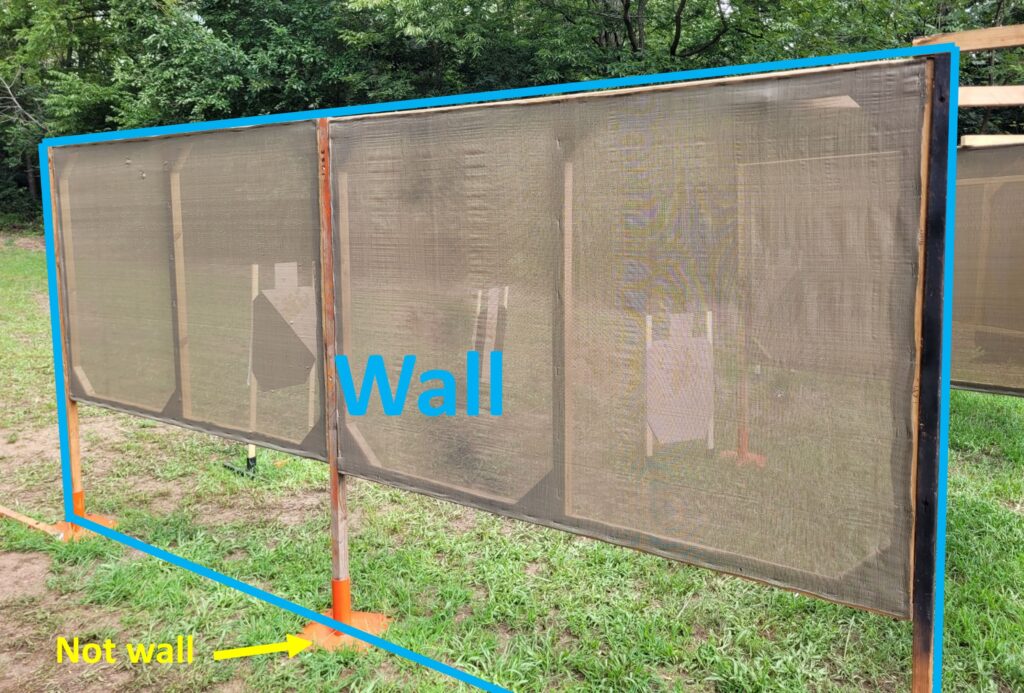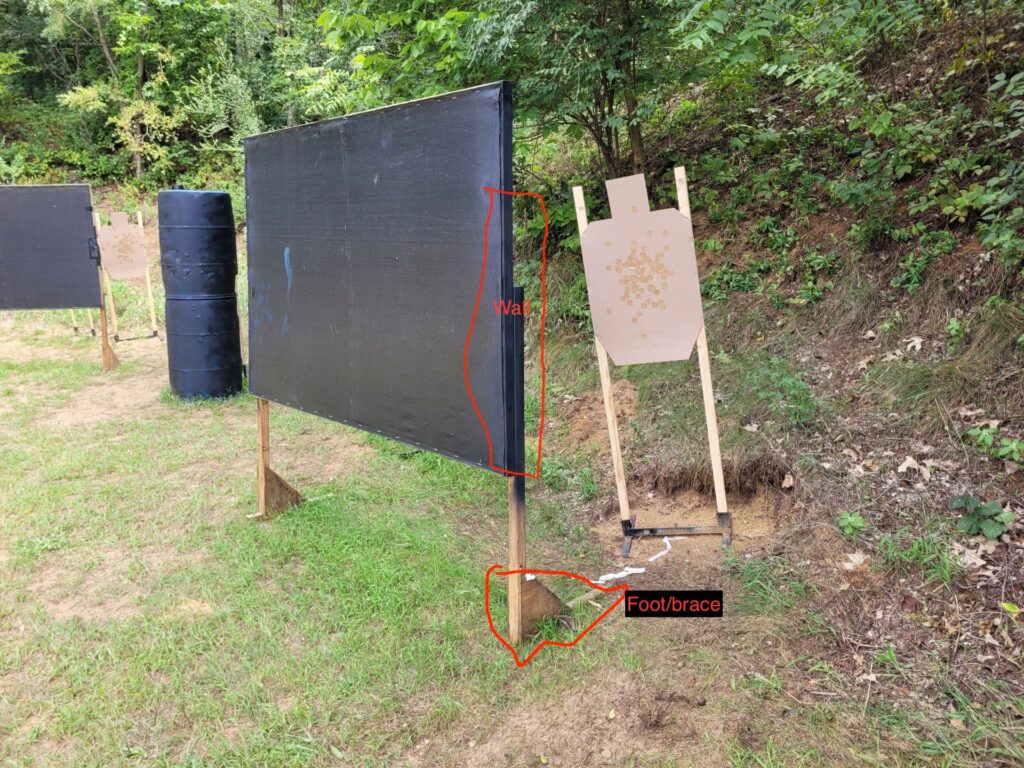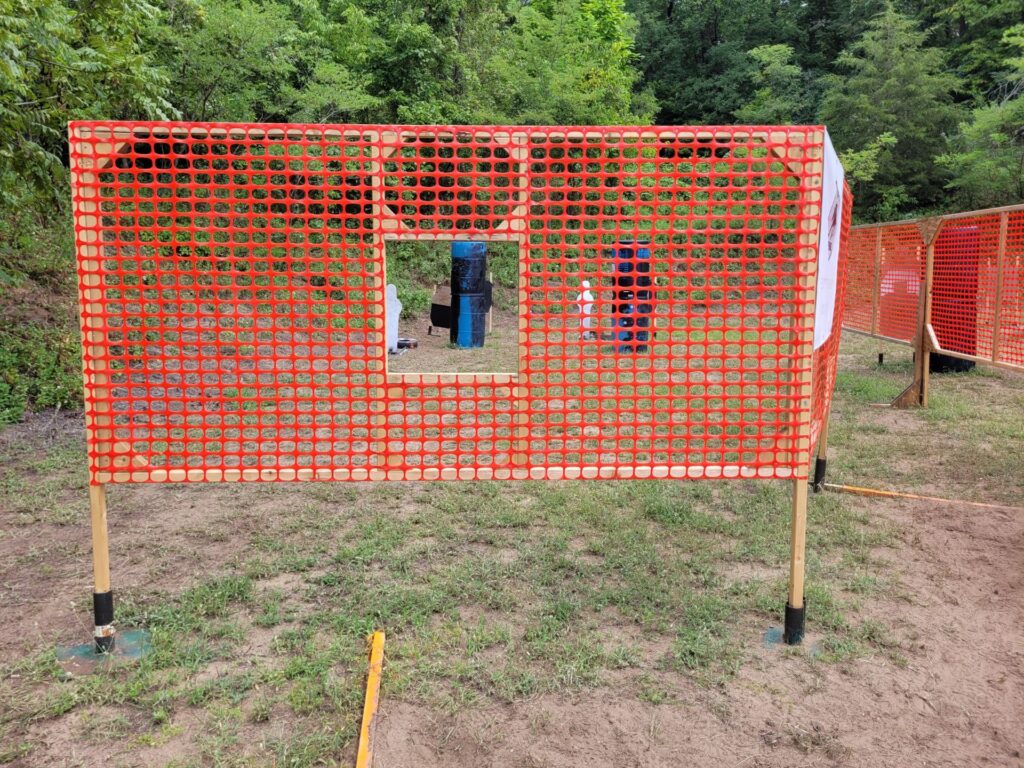We often get questions concerning what part of a wall is impenetrable, which part may be shot through, and whether the feet or supports can be used. Here are some insights into walls and vision barriers in general.
First off, a wall is considered to be a solid plane, and to extend from the ground to infinity if it’s either built to a height of 5’9″, OR designated to go to infinity in the written stage briefing. See 2.2.3.3 and 2.2.3.4 for more details. See the picture below. The blue outline shows the part that is considered to be the wall and this entire area is deemed to be a solid plane that is hardcover. Yes, even the gaps below the physical wall and the ground are part of the wall and are hardcover. The horizontal plates of the orange wall bases are not the wall, those are feet (see 2.2.3.5).

But what makes up a “wall”? In most cases, walls consist of a panel or frame covered in some sort of material, either opaque or see-through like mesh of some sort. They are also of one piece: that is, the wall is self contained with legs. Most of these must be set into a foot/base of some sort, but sometimes clubs drive rebar or another support into the ground and connect the bottom of the wall legs to the rebar. Or, a separate piece is screwed to a legless panel and then the wall is placed into a foot. The rule book says wall feet and wall supports (normally diagonal bracing) don’t exist and can’t be used for support, but what about a piece screwed to the wall itself?
Here’s an example:

The foot/brace part can’t be used for support, but the entire upper structure is a solid plane, regardless of whether it has screwed on legs or not, and is impenetrable. If this wall was built as a whole piece in this fashion, there would be no question what constitutes “wall” and what doesn’t. This stands to reason because it does visually impact the view of the target and is contiguous with the rest of the wall material. It must be maintained if shot so that individual shots through the wall that impact a cardboard target or a popper or plate are either scored as a miss or a reshoot. Designating this as a “foot” isn’t the right way to use or score hits. If this wall was extending into the shooting area, and a competitor leaned on it for support (legal if any part of the wall is inside the fault lines), you couldn’t say they weren’t allowed to lean on the outer edge or “leg”, right?
Consider another type of wall structure:

In this example, the support “leg”/upright (for want of a better term) is screwed to the back of the wall and not the side, but still constitutes part of the wall, and is not the foot or brace. The metal feet at the bottom support the wall, and the base plates are considered to not exist, but the legs do, because the wall is deemed to go to the ground in all cases, unless there is a marked, designated port. Full bullet diameter hits in this wall, or shots which pass under the wall are considered to be misses.